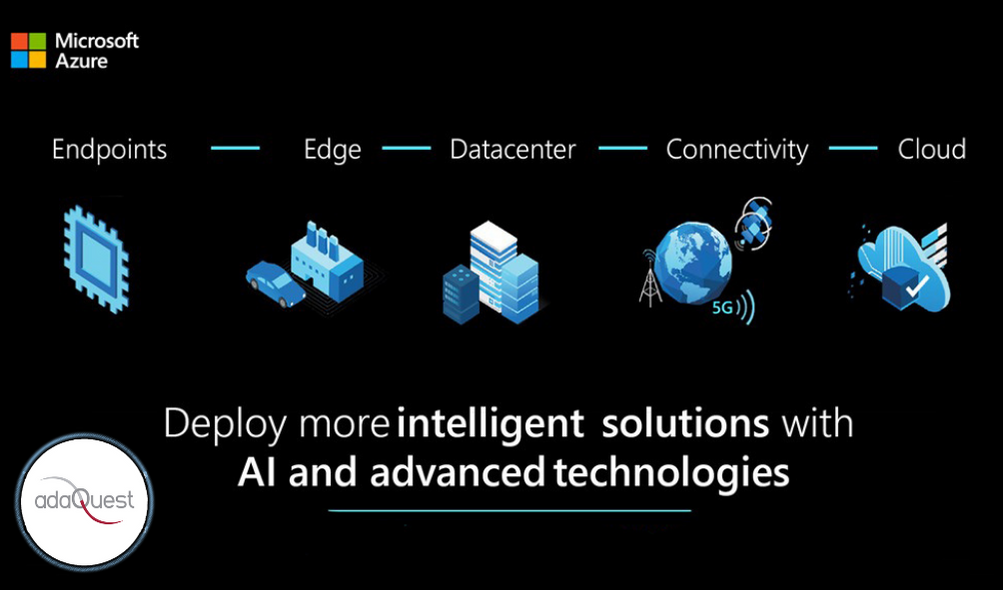
07 Sep 4 ways AI, computer vision, and related technologies expand IoT solutions
Microsoft Azure is working to help companies deploy smart IoT technologies and services, including deep AI learning skills, computer vision, and audio or speech capabilities. Adding these capabilities allows solutions to solve more business challenges by bringing two or more together – adding computer vision and AI, for example, greatly expands the potential uses for IoT solutions.
Four ways enterprises are benefitting from AI and computer vision
The strength of AI and machine learning algorithms is their ability to analyze vast amounts of data faster than humans and drive real-time decisions. Here are four ways that IoT solutions with Azure technologies are helping in a wide range of scenarios:
1. Improving common IoT-enabled applications
AI, computer vision, and audio or speech technology can enhance common IoT-enabled tasks, such as remote monitoring and predictive maintenance. Automated analysis of multiple video streams is able to detect movement or unusual actions and send instant notifications when they occur. Computer vision enables telemedicine technology to remotely monitor patients at home. Microphones can collect sound from industrial machinery and analyze it for deviations from normal operating sounds, which indicates if maintenance may be required soon.
2. Enhancing employee safety, patient care, and customer service
Pairing computer vision and AI can keep people safer. To assist medical technicians in scanning medical images, these technologies can automatically look for abnormalities and notify medical personnel which images require further examination. AI and machine learning algorithms can analyze video streams to monitor employee safety and alert them when there’s a potential danger. In retail stores, a similar system can limit customer numbers in a crowded space, as well as monitor inventory and notify employees when items need to be re-ordered.
3. Reducing complexity for developers and users
Even as IoT devices and services advance, technology providers are trying to simplify their deployment. Microsoft Azure is encouraging developers to design IoT plug-and-play compatible devices and offer toolkits, that connect quickly and speed up deployment. This focus helps make devices and systems more understandable to those who use them every day.
4. Accelerating potential return on investment
Adding advanced technologies also has the potential to create faster returns on investment (ROI) in IoT solutions. Companies using AI in IoT solutions have fewer projects in the learning phase and more projects in the purchasing phase compared to surveyed companies who aren’t using AI in a solution, according to Microsoft IoT Signals Report surveys. Ninety-six percent of those companies integrating AI also indicate overall satisfaction with IoT technology, compared to 87 percent among IoT adopters. They’re also more likely to view IoT as critical to the success of their business, leading to more IoT investment and use. The technology itself has the potential to save enterprises significant costs and time. For example, DC Water streamlined sewer pipe inspections with an AI-powered video analysis solution that reduces pipe scanning costs by 75 percent and can create an ROI of 350 percent over three years.
Learn more about advanced technologies in IoT solutions
To learn more about how AI, computer vision, and other advanced technologies can unlock new capabilities in IoT solutions, read our white paper, “4 ways AI, computer vision, and related technologies expand IoT solutions.” The white paper highlights real-world solutions that successfully implement AI, computer vision, and related capabilities in industry-specific scenarios and discusses how different hardware, platforms, and tools can help maximize return on investment for various use cases.



Sorry, the comment form is closed at this time.